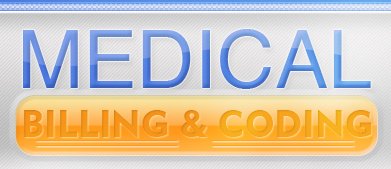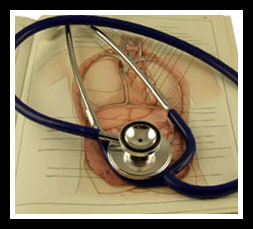Medical Coding BooksThe term "medical coding books" generally describes the three coding books that medical coders use; the CPT, ICD-9-CM, and HCPCS.These coding books are used to translate a written medical record into number sets prior to insurance submission. Number sets, also called medical codes, each represent a unique descriptor found in one of the three books. CPT, ICD-9-CM, & HCPCSThree Medical Coding Books:
Codes can be selected from one, two, or all three medical coding books when coding a single medical record. Each book is distinct from the other, carrying it's own set of unique codes, descriptors, and guidelines.
Current Procedural Terminology (CPT) The Current Procedural Terminology book contains medical codes that are often called CPT codes or National Level I codes. These CPT codes depict procedures and services that can be performed by physicians, surgeons, specialists, and ancillary staff. In professional coding CPT codes are what insurance companies base their reimbursement on. All CPT medical codes are completely numeric and they are always five digits in length. Each five digit number set is unique and is not repeated in any other medical coding book. Each medical code also has a unique detailed descriptor attached to it.
CPT Examples26740 - Closed treatment of articular fracture, involving metacarpophalangeal or interphalangeal joint; without manipulation, each76813 - Ultrasound, pregnant uterus, real time with image documentation, first trimester fetal nuchal translucency measurement, transabdominal or transvaginal approach; single or first gestation 13121 - Repair, complex, scalp, arms, and/or legs; 2.6cm - 7.5cm
~ Codes for surgical procedures performed on the following organ systems: Integumentary, Musculoskeletal, Respiratory, Cardiovascular, Hemic and Lymphatic, Mediastinum, Digestive, Urinary, Male and Female Genitalia (includes maternity procedures), Nervous, Ocular, and Auditory.
~ E/M codes are listed next, followed by Anesthesia, Surgery (by organ system), Pathology, Radiology, and Medicine codes. ~ Category II and III codes are listed next. These unique codes are use for quality control measures and new technology. ~ Appendicies A - M are located near the end. ~ The alphabetic Index makes up the final portion of the CPT book and is used to look up codes by procedure name or anatomical locaiton.
International Classification of Diseases, 9th Edition, Classification Modification (ICD-9-CM) This medical coding book was first published in 1948 and is updated every year with changes effective October 1st of each year. The ICD-9-CM (also known as the ICD-9) is divided into three volumes. Volume I is known as the Tabular Index, Volume II is known as the Alphabetic Index, and Volume III is known as either the Operative Index or the Procedure Index.
Volumes I and II contain medical codes that depict a diagnosis. These "diagnosis" codes are used to describe accidents, illnesses, injuries, and conditions. Codes from this medical coding book are three to five digits in length, have a decimal point following any third digit, and can be numeric or alpha-numeric in nature. Volume III contains medical codes for procedures performed in a facility setting. These medical codes are numeric, three to four digits in length, and have a decimal point following any second digit. Volume III also has a separate alphabetic index for locating its codes.
ICD-9-CM ExamplesVolume I & II
881.00 - Open wound of elbow, forearm, 448.1 - Influenza due to identified novel H1N1 influenza virus (2009 Swine) 643.03 - Excessive vomiting in pregnancy, mild hyperemesis gravidarum, antepartum condition or complication. V03.7 - Need for prophylactic vaccination and inoculation against bacterial diseases; Tetanus toxoid alone Volume III 57.94 - Insertion of indwelling urinary catheter. 06.12 - Open biopsy of thyroid gland.
~ 3-4 digit numeric codes that describe in patient procedures (vol. III) ~ V codes; 3-5 digit codes that begin with a V and decribe circumstances for healthcare encounters. ~ "E" Codes; 3-5 digit codes that begin with an E and describe how an accident or injury occured.
~ Volume II (Alphabetic Index) is located next. This lists all accidents, injuries, diseases, and conditions alphabetical by name and includes three tables; Table of Hypertension, Table of Neoplasms, & Table of Chemicals and Drugs. ~ External cause index (E code index) is used specifically to reference E codes. This index is located between Volumes I and II. ~ Volume I (Tabular Index) makes up the center portion of the book. This contains all codes with their full descriptions, conventions, and notaitons. ~ Appendicies A-E ~ Alphabetic index for Volume III. This lists all in patient procedures in Volume III alphabetically for reference. ~ Tabular index for Volume III. This index contains all Volume III codes with their full descriptions, conventions, and notations. ~ References
Healthcare Common Procedural Coding System (HCPCS) HCPCS codes are also know as National Level II codes. These codes are used to depict non-physician services, Durable Medical Equipment (DME), supplies, and drugs that are not covered by CPT national level I codes. HCPCS codes are five digits in length with no decimal holders and are alphanumeric in nature. Each codes begins with a letter and is followed by four numbers. The HCPCS book structured very similar to the CPT book.
HCPCS Code ExamplesK0011 - Standard-weight frame motorized power wheelchair with programmable control parameters for speed adjustment, tremor dampening, acceleration control and brakingA5120 - Skin barrier, wipes or swabs, each Q4011 - Cast supplies, short arm cast, pediatric (0-10 years), plaster.
~ The Table of Drugs with drugs listed alphabeticaly is next. ~ HCPCS modifiers listed with their full description is located between the Table of Drugs and the Tabula index. ~ The Tabular index lists all codes with their full description, conventions, and notations and is located in the center of the book. ~ Appendix A which is for Internet Only Manuals makes up the remainder of the book.
|

Book NotationsSome certification exams allow high lighting and hand written notes in your medical coding books.Making tabs on the side of your books for easy referencing is also helpful. Also, consider using a pencil eraser or rubber thumb to aid in quick page turning. Exam TipsCertification exams do not require memorization, just an extensive knowledge of your medical coding books.The answer to almost every question is located in one of the medical coding books, you just need to know how to find it. Tips:
Coding Book
Be sure to check out what medical coding books are approved and which ones are not prior to sitting for your certification exam.
|
|
ICD-10Out of the three medical coding books the ICD-9-CM is the oldest.Decades of updates and revisions has created a decrease in code detail as well as a lack of room to expand with technology. The solution? The ICD-10-CM and ICD-10-PCS. The ICD-10-CM will replace Volumes I and II in the ICD-9 and the ICD-10-PCS will replace Volume III. With well over 100,000 additional codes these books will be in effect October 1, 2013......(more) RSS information

Enjoy This Site?
Then why not use the button below and add us to your favorite bookmarking service? |
||
|
| ||


 Volumes I and II are used in both the professional and facility settings and Volume III is reserved for facility settings only.
Volumes I and II are used in both the professional and facility settings and Volume III is reserved for facility settings only.